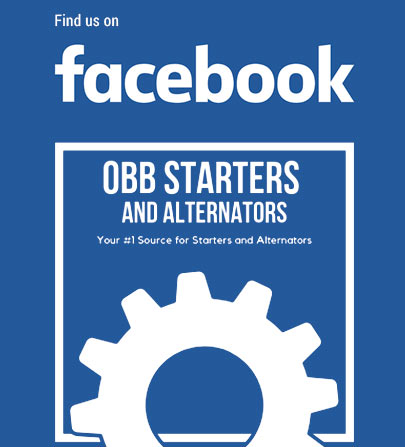Welcome to OBB Starters and Alternators, Your #1 Source for Starters and Alternators!
We offer a full line of quality starter motors, alternators, tilt and trim motors, starter generators, AC and DC motors at heavily discounted prices for all industries including automotive, industrial, marine, motorcycle, ATV, UTV, small engines, medium and heavy duty trucks as well as lawn and garden.
OBB Starters and Alternators offers a one year warranty on all parts sold as well as FREE shipping within the continental US. Get the best prices and online experience always with OBBStatersandAlternators.com!






 ...
...